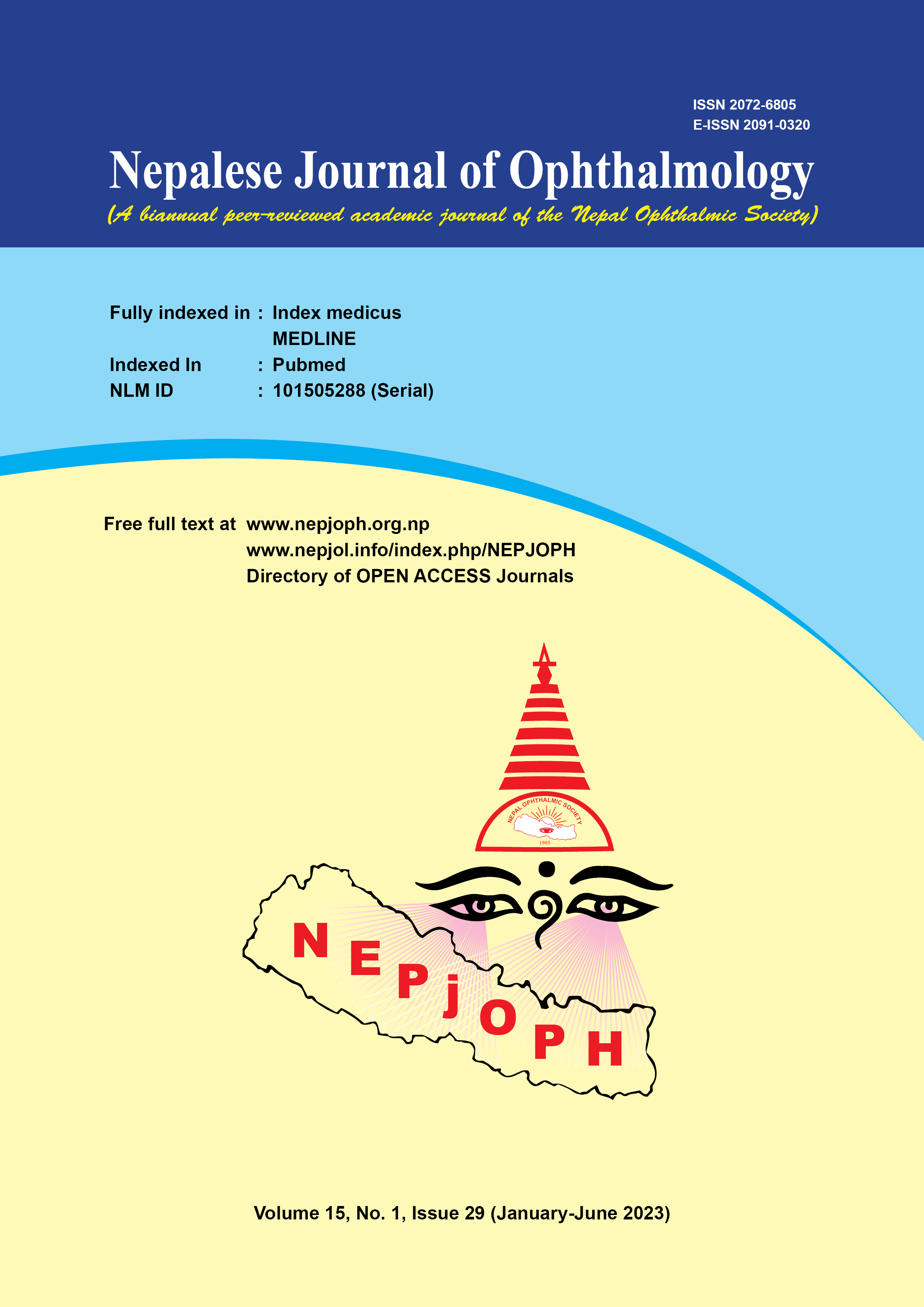Safety and Efficacy of Low Dose Atropine in Nepalese Children with Progressive Myopia
DOI:
https://doi.org/10.3126/nepjoph.v15i1.49076Keywords:
Childhood blindness, Children, Low dose atropine, Myopia, NepalAbstract
Introduction: Myopia is emerging as a public health emergency worldwide. Low dose atropine has been proven to be safe and efficacious in halting the progression of myopia.
Objectives: Aim of this study was to evaluate safety and efficacy of low dose atropine in Nepalese children with progressive myopia.
Materials and methods: It is a prospective non randomized interventional study. Children with myopia progression of >0.5D in the last six months with baseline myopia of -1.5 to -8 Diopter and astigmatism of 3 D or less were prescribed 0.01% atropine daily at bedtime for two years. Demography including age, gender, race, and examinations including anterior and posterior segment, axial length, near point of accommodation and near vision were recorded in all the children. Ocular and systemic side effects were documented.
Results: A total of 200 children were enrolled in the study. Mean age was 11.9±2.97 years with 41% female. Baseline mean axial length was 24.47±1 and mean spherical equivalent was 3.69±1.33. Average increase in axial length was 0.18(±0.02), 0.17(±0.02), and 0.19(±0.04) mm in six months, one year, and two years respectively. The increase in spherical equivalence was 0.2 (±0.01), 0.3(±0.02), and 0.3(±0.02)) diopter in six months, one year, and two years respectively. The myopia progression was found more in the Mongolian race compared to the Aryan race. No ocular or systemic side effects were documented.
Conclusion: Topical low dose atropine appears to be safe and efficacious in halting the progression of myopia in a cohort of Nepalese children. Further randomized control trial on various doses of atropine are recommended.
Downloads
Downloads
Published
How to Cite
Issue
Section
License
Copyright (c) 2023 Nepalese Journal of Ophthalmology

This work is licensed under a Creative Commons Attribution-NonCommercial-NoDerivatives 4.0 International License.
This license enables reusers to copy and distribute the material in any medium or format in unadapted form only, for noncommercial purposes only, and only so long as attribution is given to the creator.




